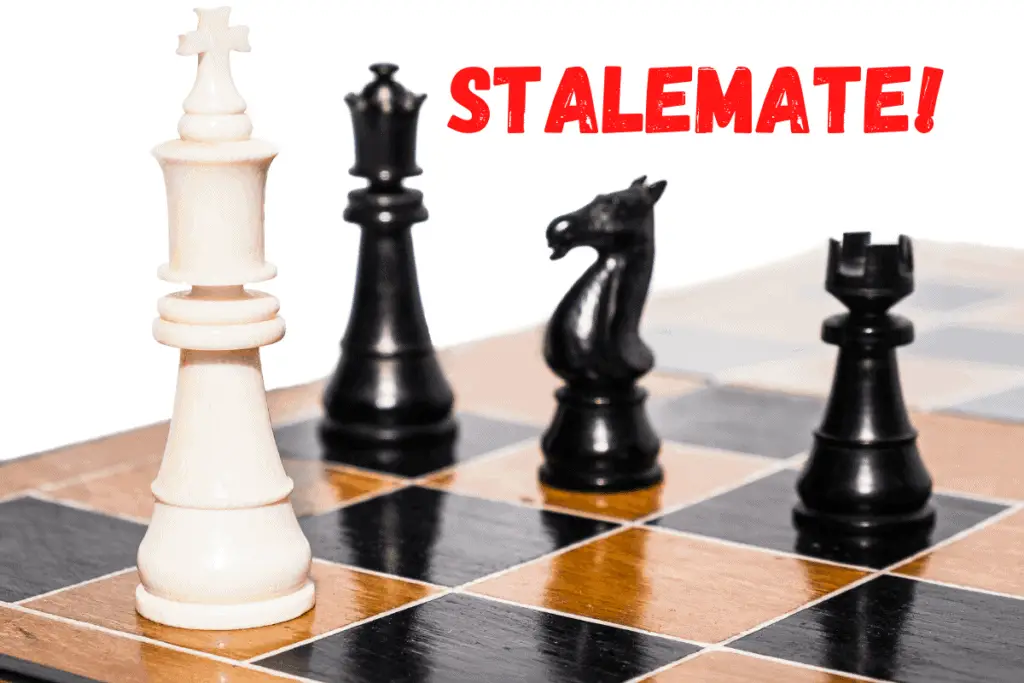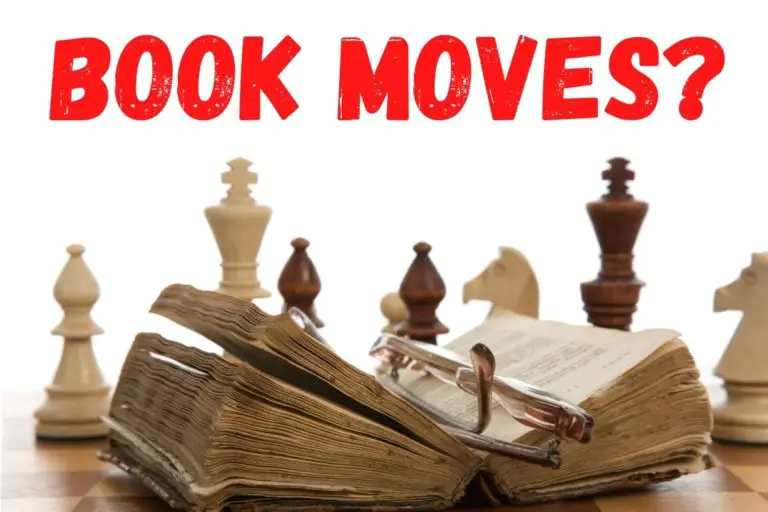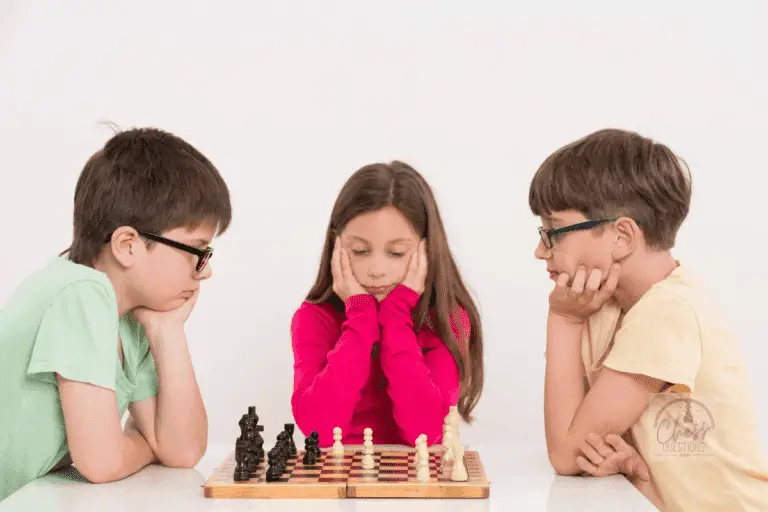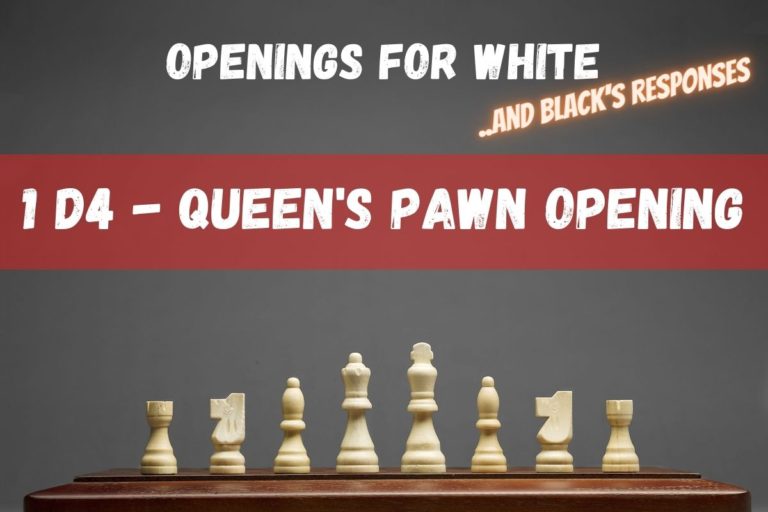Beginner Chess Tactics: Identify 11 Threats, Patterns & Traps
⭐⭐⭐ Take 11 minutes to read and improve your chess game ➡️ : This article was first published on, and is Copyright of Chessquestions.com
Chess is a complex game that requires both strategic and tactical skills. This blog post will be teaching beginner chess tactics, which are important for students just learning the basics about chess tactics. Chess can be intimidating to those who haven’t played before or don’t know much about it, but these tactics should help beginners identify threats and patterns in order to develop their chess-playing skills and perhaps an unbeatable strategy. These tactics need to be practiced and memorized so they become second nature over time, but with practice, you’ll get there!
The First Thing to Understand About Chess Tactics for beginners.
When starting to learn chess and considering adding tactics for your game you should first understand the difference between chess strategy and tactics.
Chess strategy is your overall plan and specific strategic attacks that you may use in order to gain the advantage on the chessboard, while chess tactics are the ability to see the potential and moves that will gain tempo and set up your upcoming moves and captures and execute them.
Read on and I will provide some guidance as to some tactics you can use and special moves that you can utilize to be in a position to control the middle of the board and keep your opponent under attack, forcing them to defend whilst you build your tactical advantage.
Types of Chess Tactics
There are two main types of Chess Tactics: Static Tactics (those that change one or more pieces’ positions) and Dynamic Tactics (a series of moves forcing an opponent’s piece for example). These should be trained as early on as possible!
Static Chess Tactics
Static chess tactics are moves that you make that position your pieces ready to execute a specific attack and chess strategy to capture enemy pieces. There remains a danger that your opponent will be able to counter this tactic, but if you are able to execute the plan correctly without your opponent noticing then it should be successful.
Don’t forget your opponent will most likely have exactly the same intent, but if you can include some dynamic tactics interspersed with the static moves you should be able to come out on top.
Dynamic Chess Tactics
The more powerful tactic in your armory are using specific tactical moves in which you force your opponent to take defensive measures to protect pieces against a variety of strategies you aim to employ in the game.
If you can move to a position where your opponent has to make a move that is not part of their tactical approach, you will have taken away their best opportunity for a tactic.
Some of these strategies include:
- – forks that attack two enemy pieces at once and guarantee (in most cases) material gain
- – pins that can prevent your opponent from moving a piece they were using to attack as they would lose a more valuable piece. This may not always result in you making a capture of the target piece, but the pinned piece, if en prise, will be available. Either way, you are forcing your opponent away from their current tactic.
- – discovered attacks where moving one chess piece reveals an attack by another chess piece currently out of sight
These are just a few strategies that your tactics can result in gaining an advantage by making captures of exchanges where you exit the tactical period of play with more material power on the board and a stronger position to begin your next tactical move to execute another strategy attack.
11 Chess Tactics for Beginners to Learn
There are many tactical considerations in chess, probably far more than you will ever have time to learn and master, so choosing a few key options to study to begin with is best. This is a list of easy to grasp tactics that will help you get to grips with the game.
These include not only the attacking element but tactics to employ if you find yourself in a position of disadvantage. Also, a key tactic is knowing how to close an end-game out quickly.
Study each of these 11 elements and you should be able to make tangible progress in your game.
1. Avoid Losing your central pawns where possible
Whilst there remain arguments as to the value of maintaining possession of central pawns, one has to concede that losing material of any value is not a good thing.
Control of the center of the board is a key element to holding an advantage and the sooner you control the center the better, especially, squares d4-d5-e4-e5.
Pawns positioned here and not lost can support the attack of your stronger pieces.
Do not exchange your center pawns for an opponent’s flank pawns (Those lines outside in files c and f) – by moving out you are opening up the center and providing room for your opponent to come inside, take control of the center and attack you. Even if tempted by a decoy move to take your pawn toward the flank, try to resist where possible and consider the greater loss you may suffer in exchange for a pawn capture of another pawn, or even a knight or bishop.
There may be something much more dangerous about to happen on the vacated d and e squares.
2. Block passed pawns with Knights
If you find an opponent has an opportunity, especially centrally, to create a passed pawn, it should be blocked as soon as possible.
An advanced and isolated pawn is a serious threat to your defense as it can support and defend strong pieces moving into attacking positions toward your backline.
Whilst blocking with another pawn is effective and will halt the progress, the knight is a better choice. The chances are you don’t have a pawn on that file anyway, so the knight is perfect in having several options to move covering 4 advanced squares from its blocking position.
These four squares can be used as your own attack with knight defense or left open as traps if your opponent takes their eye off the ball and forgets the knight’s presence tucking in behind the pawn.
3. Attacking the F7 Square
The f7 square is famous for being the weakest square on the board, sitting directly in front of the bishop, with the knight and king on diagonal tangents.
If you find your opponent opening with e4, especially a novice, you can bet they have one eye on the f7 square and will be looking to attack it. A swift knight move usually deflects the idea.
The attack usually forms the basis of two pieces attacking the square. If you do not see it coming, you are suddenly in checkmate with the king locked in place and unable to capture the checking piece because of the backup.
Usually, this is a combination of the bishop and queen combining to complete the Scholar’s mate on f7.
It is rare to see this outside of beginner-level chess, but not entirely non-existent. Any strong player getting on the f7 early in the game will be seen hanging their head in shame immediately!
4. Outposts
Squares on the fourth, fifth, sixth, and even seventh ranks that are protected by pawns and are under no threat from opponents pawns are considered outposts in chess. They are key tactics to attacking strategy as a safe piece that can form part of a fork (with a knight), or Pin with a bishop.
You should always be on the lookout for a potential outpost to occupy as part of your attack.
Knights are also fast and flexible pieces that allow you to quickly change attacking targets if needed, making them an ideal chess tactic for beginners who want to develop their skills.
5. Sacrifice
The sacrifice is a fundamental part of chess tactics and can make for interesting trades and exchanges. Even allowing the capture of one of your major chess pieces can be an integral tactic to your end game strategy as part of a trap or decoy for material gain.
Tactical sacrifices are a key element in the end-game when looking to close in and mate your opponent. At this point of the game, even your most valuable queen could be your sacrifice to gain the advantage.
I have used this video from chess.com on more than one occasion on this site, It provides three examples of incredible foresight and sacrifice of a queen with benefits.
I have yet to get into a position to play this move, but I promise, if you ever come up against me online, be prepared this is a tactic I am looking to use at my earliest convenience. I would just love to play this stunner.
6. Understand Trading and Exchange
The object of chess is to win, not keep as many pieces as you can although they do of course help in your strategy. An important tactic in chess is trading and exchanging your material as required to gain a tactical advantage.
The sacrifice example above is a very brief trade-off for a winning outcome, although the opponent’s hand is forced, and you would likely see resignation if they didn’t see the unavoidable checkmate that was coming. In normal trades and exchanges, players are evaluating the cost or gain of an exchange of pieces protecting each other squares.
Making an exchange of pieces is usually something you want to do if you can gain points in terms of the value of the pieces taking part, but this is not always the case.
The best time to make an exchange of pieces in a game of chess is when you are ahead on the material. The fewer good value pieces your opponent has he they are already down the better so it is a good time, to even trade your rook (5 points) for their Bishop (3 points) – You may still be in a position of material superiority anyway.
Even if you have made an exchange where you have lost more value, you could be in a position where you have opened up an area to create a passed pawn heading for promotion to regain much more value.
7. Deflection
Deflection in chess is a tactic used to force an opponent to make a move that vacates a square that would be important to your strategy and current tactic, perhaps for an end-game mating pattern. Deflection is often confused with, and is definitely not a decoy.
Difference between a deflection and decoy
Deflection means a piece goes away from a square, while decoy means it is lured toward a square. Whereas decoys involve luring an enemy piece to bad squares, deflections typically require tempting pieces away from good ones—usually by enticement along the path of greatest resistance.
The deflection tactic lures pieces away from good squares whilst the decoy strategy lures pieces toward a bad square. This is the difference between the two but both tactics generally result in the recipient losing tempo if not material, and often finding themselves in checkmate.
Deflection can be on of the most powerful tactics in chess when played skillfully
8. Rooks on Open Files
Keeping your rooks on the backline for as long as possible often pays dividends in the end game, especially if you have moved the to files that are open end to end.
A backline checkmate can be one of the most devastating and overlooked moves in chess, particularly by your opponent who is most likely looking at your more advanced attacking pieces.
Keeping your rooks on open files opens up the entire board for their movement, and if you can find a position for them to quietly await the opportunity for a devastating attack it can have hugely advantageous effects.
9. Playing for a Draw
Up until now, I have spoken about tactics mostly in the view of attacking strategy and looking at winning games, but another important tactic in chess is playing for the draw. In some cases, this could be purposely trying to force a stalemate to avoid what looks like a sure defeat against a player who can not close the game.
When you are in a disadvantageous position, and winning the game looks out of the question or even impossible if you have insufficient mating material, you may have no option but to resign. However, if by some miracle, you have managed to get yourself in this position against a player who you believe can not tactically get you in checkmate, you may be able to play for the draw.
One way of doing this is to try to remove the pieces required to get you in checkmate. You may have only a King and a knight remaining, against his King, Knight, and Bishop. If your opponent is a novice and unaware of the minimum material required to checkmate, you could center your attack solely on the rook, to leave them with no mating material and an inevitable draw.
This could be viewed as a tactic to switch a losing position to a draw on your part and a valuable half point.
10. Avoid the Fishing Pole Trap
Castling early is a tactic that is taught and encouraged, but when doing so Kingside, you should always be aware of the fishing pole threat on the H file and not be tempted in by a material change gain that will cost you the game
If you fall for this you have only yourself to blame after seeing this explanation.
Use the forward button to play through the first few moves in this example to the point where white castles
You’ll see a series of book moves to begin with, Kings pawns, followed by knights. Then white plays bishop to b5, but rather than black threatening bishop with being drawn to a6, they bring Nf6, beginning the move to g4
White threatens the knight with h3, and expects black to take evasive action and retreat but no, black playsh5 instead, and white misses what is really going on, viewing only what initially looks like a great exchange with the pawn on h3 able to capture the black knight with only the threat of losing that pawn to the black pawn on h5.
Here is where the trouble comes. The key move in this tactic is the black Knight to f6, opening up the diagonal for black queen, but once getting there, not retreating from the white pawn threat but rather playing their pawn h5.
White can not resist this seemingly good exchange, which opens up the h file as black captures with the h5 pawn leaving a clear route for the h8 rook.
But here comes the queen passing through f6 vacated by the Knight that set everything up, to h4 and the game is lost at this point.
11. Learn End-Game Tactics and Mating Patters
It is all very using these tactics outlines in this post, but come to the end game and you have the advantage but are unable to finish off your opponent by getting them in checkmate, then it could all have been for nothing.
You should study End games and mating patterns so that you can identify when you are in a position to finish off your opponent quickly.
The chances are your opponent may resign before you even get a chance to mate, but getting to that point is also a victory, so understand which pieces to attack and mating patterns to avoid getting into time trouble or falling for a stalemate trap
Round-Up
These basic chess tactics for beginners can set you on your way to get better at chess. Take each one, practice them of find some puzzles based on the concepts and use them practically to be able to add them to your overall chess strategy.
Happy chessing!








